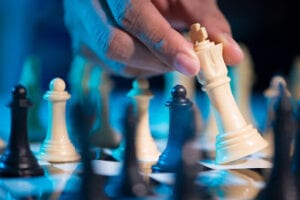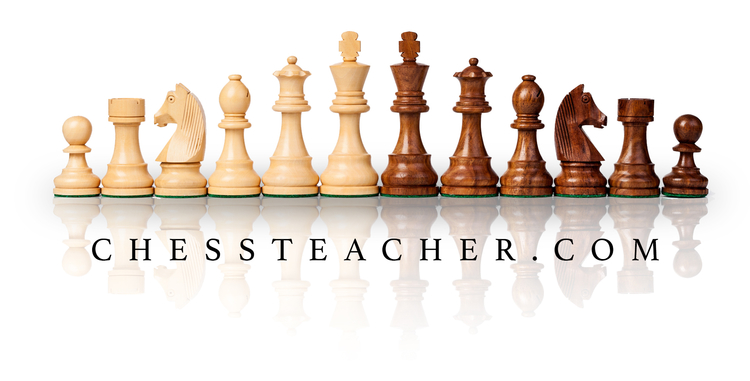3 Factors to Consider Before Every Chess Move
 Chess moves are complex decisions that require detailed analysis of many different aspects of the game. All of this analysis, however, can be viewed through three broad factors that should always be kept in view. Before every move you make in chess, consider your time, position, and material before setting down a piece.
Chess moves are complex decisions that require detailed analysis of many different aspects of the game. All of this analysis, however, can be viewed through three broad factors that should always be kept in view. Before every move you make in chess, consider your time, position, and material before setting down a piece.
1. Check the Time You Have
Whenever you play a timed game of chess, time should be your first consideration because you automatically forfeit if your timer reaches zero. Considering time doesn’t necessarily mean you have to rush every minute, though. Having a solid grasp of time in a timed chess game requires known when to play quickly as well as when to go slow.
Generally speaking, you should play openings and endgame scenarios as fast as you’re able to execute the right moves. If you can recognize moves during these stages quickly, you’ll have more time to consider midgame scenarios — which often have more complex positions and require more detailed analysis.
In addition to these general guidelines, you should also learn to realize when a key move that could have an oversized impact on the game is being made. When you face a major dilemma that either will decide the rest of your strategy in a game or requires selecting between two fairly even options, use the extra time have saved to think the move through.
Of course, you simply have to make a move quickly if you’re nearly out of time. End-of-game clock issues can lead to rushed and incorrect moves, but a rushed bad move is better than no move and an expired clock. If you don’t have time to think, just make the best move you immediately see.
2. Identify the Key Positions
Positional analysis requires an appreciation of the different high-value places on the board. At a most basic level, there are three areas to be aware of:
- Controlling the center four squares lets you control the game
- Castling your king into either available corner provides extra protection
- Getting a knight or queen on the backmost rank makes it hard for your opponent to operate
Of course, a pawn on the backmost rank also is a great benefit as the pawn can be converted to whatever piece you want.
These broad principles hold true across most openings and strategies, but the specific type of play you implement will determine what specific squares are most important. You’ll learn more about individual places as you play, study, and take chess lessons.
As you evaluate various potential moves, this knowledge will prove invaluable. Improving your position in relation to your opponents is a key step in winning chess games.
3. Understand the Value of Various Pieces
The final step is to understand the various value that each piece has. Your king is, of course, the most important piece on the board because you lose when the piece is checkmated. Aside from this, pieces generally are valued in the following order that goes from least value to greatest value:
- Pawns
- Bishops and knights
- Rooks
- The queen
Just as the strategy you use influences your positional considerations, it also may alter this list slightly. Also, some pieces may be more important to your particular opening than others. For instance, you may favor your black-square bishop over your white-square one. Similarly, a pawn on the side you castle to might be more important than one on the other side of the board.
Moreover, pieces’ values don’t remain completely the same throughout the game. Knights might have more value early on in your strategy, for instance, because they can jump over pieces and get out quickly. Later in the game, a bishop or rook that can cover a full line of squares at once may be far more useful. You’ll have to make value judgments on a continual basis.
For help thinking through these different factors, contact the Chess Teacher to learn about the online chess lessons that are available.
